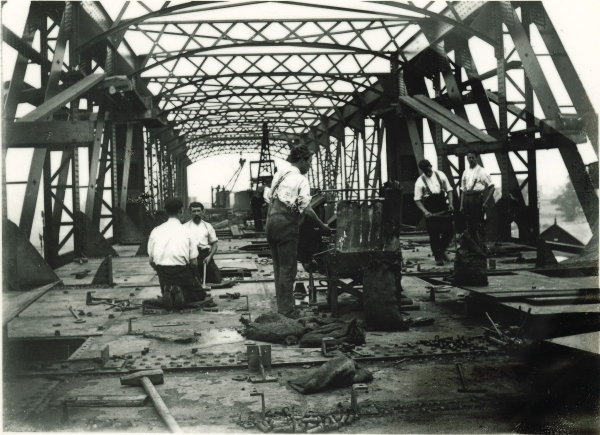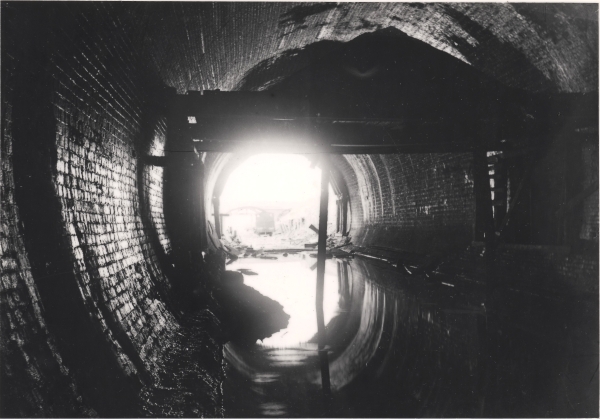Despite living close to the line, navvies often had to travel some distance before they reached the construction site. Hauled by an 0-6-0 contractor's locomotive, these men are on their way to work in Leicestershire. See Details
Maintaining an even gradient that would allow the Great Central express trains to run quickly meant that the line could rarely follow the contours of Britain's undulating landscape. Excavating cuttings and forming embankments were the principal means of overcoming these natural obstacles, and shifting millions of tons of rock and soil from one place to another required thousands of navvies working mainly with pick, shovel and wheelbarrow. By the 1890s, steam powered machinery was used extensively, but most of the work still had to be done by hand. The steam excavators usually made light work of gnawing out the rough shape of the cutting, but men had to follow close behind to shore up the steep and dangerous slopes created by the machines. Navvies would later 'dress' the sides of the cuttings and embankments to form even banks of earth.
Large numbers of men were also needed to construct the vast infrastructure of tunnels, bridges and viaducts that were built to negotiate hillsides, cities, roads, rivers and valleys. In common with the professional excavator, the men who built these feats of engineering would also have been considered navvies. It is easy to forget that these were skilled workmen: blacksmiths, steel erectors, brick layers, miners, engine drivers, carpenters and riveters were all essential parts of the workforce that built Britain's railways. In addition, rock blasting, spoil tipping, ballasting and track laying were some of the routine tasks that might be part of a navvy's typical day.
For all those employed on the London Extension, working conditions were a marked improvement on those endured by previous generations of navvies. The contractors were established firms who took greater responsibility for their employees' welfare. Railway construction remained a dangerous business and accidents were an accepted risk of the job, especially when engaged in blasting or building tunnels. It was a long working day, often starting as early at 6.00am, with some men even being required to work during the night. However, the harsh exploitation that typified the railway-mania of the mid-nineteenth century was certainly a thing of the past. Then, the contractors cared little for the well being of the navvies. Men were poorly trained and inadequately supervised and speed, not safety, was the primary concern of their employers. It was said that a man working on the construction of Woodhead Tunnel during the 1840s was at greater risk of injury than a soldier in the field at the Battle of Waterloo!
Viaduct construction at Rugby See Details
Looking north out of the portal of Catesby tunnel, Northamptonshire. Although working conditions had improved dramatically since the mid-nineteenth century, tunnel construction in the 1890s still presented the navvy with considerable danger. See Details










